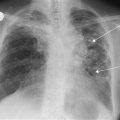Hirsutism
Hirsutism is the presence of male-pattern hair growth in women. This is not synonymous with virilism, which, in addition to hirsutism, is associated with the development of male secondary sexual characteristics in women. Hypertrichosis refers to the excessive growth of hair and may occur in either sex.
History
General
The onset and duration of hirsutism are useful features in the history to help determine the aetiology. Onset in childhood is suggestive of congenital adrenal hyperplasia, whereas sudden onset of hirsutism in adult females raises concerns of androgen-producing tumours of the ovaries or adrenal glands. Enquiries should be undertaken as to whether any relatives have similar problems as the aetiology may be familial. However, beware of family cancer syndromes, such as BRCA gene mutation, which is associated with familial ovarian carcinoma. Excessive androgens may result in virilisation, producing symptoms such as acne and deepening of the voice.
Menstrual history
A detailed history regarding the onset, periodicity and regularity of the menstrual cycle should be taken, as amenorrhoea is a feature of polycystic ovarian syndrome, congenital adrenal hyperplasia and prolactinomas. In addition, galactorrhoea may also be an accompanying feature of prolactinomas.
Drug history
A drug history may identify the use of progestogen-containing hormone replacement therapy or oral contraceptive pills. Hirsutism may also result as a side-effect of anabolic steroid use by body builders; phenytoin for epilepsy; minoxidil for hypertension and ciclosporin as an immunosuppressive agent in organ transplantation.
Associated symptoms
Weight gain may result from Cushing’s syndrome, but is also a common complaint with polycystic ovarian syndrome. Symptoms such as headaches, vomiting and visual field loss are suggestive of a pituitary adenoma, which can result in acromegaly, Cushing’s disease or hyperprolactinaemia (prolactinoma). Additional symptoms that may accompany Cushing’s syndrome are easy bruising of the skin, abdominal striae and proximal muscle weakness. Patients with acromegaly may also complain of muscle weakness, joint pains, enlarging features of the face, jaw, hands and feet, with corresponding increases in hat, glove and shoe sizes. Paraesthesia may also result as a consequence of entrapment neuropathies. Infertility may result from hyperprolactinaemia and polycystic ovarian syndrome.
Examination
An assessment should be made regarding the pattern of hair distribution. With a degree of normal variation, the distribution of hair growth with hirsutism is on the face, chin, chest and extremities. The pubic hair may adopt a male pattern, and male type frontal balding can also be present. Careful inspection for virilism may identify increased shoulder-girdle muscle mass and enlargement of the clitoris. Truncal obesity is a feature of Cushing’s syndrome, and generalised obesity occurs with polycystic ovarian syndrome. This may also be accompanied by acanthosis nigricans.
Inspection is then continued to identify co-existing endocrine disease. Features of acromegaly are thick greasy skin, prominent supraorbital ridging, broad nose, prognathism, macroglossia, poor jaw occlusion, wide interdental separation, enlarged hands and feet. Features of Cushing’s syndrome are moon-like facies, truncal obesity, buffalo hump, skin bruising, striae and proximal muscle weakness. Hypertension, diabetes and visual field defects (bitemporal hemianopia) are associated with both Cushing’s disease and acromegaly. In addition, visual field defects may also result from a prolactinoma. Hypertension is also associated with congenital adrenal hyperplasia.
Following this, an abdominal and pelvic examination should be performed to exclude a mass, which may be suggestive of a large adrenal or ovarian tumour.
General Investigations
■ Urine dipstick
The presence of glucose may be due to diabetes, which is a feature of Cushing’s syndrome and acromegaly. In addition, polycystic ovarian disease is also associated with insulin resistance.
■ U&Es
↓ potassium with congenital adrenal hyperplasia.
■ Serum glucose
Diabetes or insulin resistance with Cushing’s syndrome, acromegaly and polycystic ovarian disease.
■ Serum testosterone and DHEA
A marked increase in both suggests an excess of androgens from a neoplastic origin and warrants detailed investigation.
Specific Investigations
■ 24-hour free urinary cortisol
↑ with Cushing’s syndrome.
■ Low-dose dexamethasone suppression test
Failure of suppression occurs with Cushing’s syndrome.
■ Oral glucose tolerance test with serial growth hormone estimations
Failure of suppression or increasing growth hormone concentrations occur with acromegaly.
■ Plasma prolactin
↑ with prolactinomas.
■ Plasma 17-hydroxyprogesterone
↑ with congenital adrenal hyperplasia.
■ CA125
↑ with ovarian carcinoma.
■ US abdomen and pelvis
Polycystic ovaries, ovarian carcinoma.
■ CT abdomen and pelvis
Adrenal carcinoma, ovarian carcinoma.




